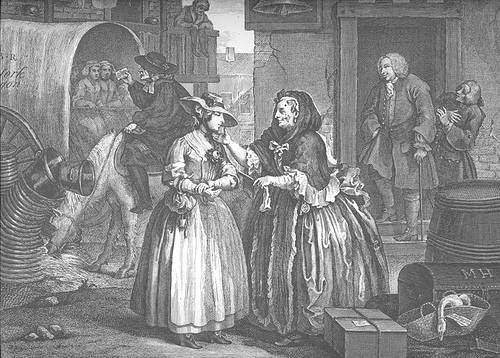World’s most expensive cities, according to a worldwide 2006 cost of living survey by Mercer Human Resource Consulting:
- Moscow
- Seoul
- Tokyo
- Hong Kong
- London
- Osaka
- Geneva
- Copenhagen
- Zurich
- Oslo
New York was number 11.
World’s most expensive cities, according to a worldwide 2006 cost of living survey by Mercer Human Resource Consulting:
New York was number 11.

Tom’s Restaurant, famous as the diner in Seinfeld, shares a building with the Goddard Institute of Space Studies in Manhattan.
Excerpts from 19th-century students’ English exams:
— From Mark Twain, “English as She Is Taught: Being Genuine Answers to Examination Questions in Our Public Schools,” 1887
Chocolate is toxic to cats, dogs, parrots, and horses.

When sunlight is refracted through ice crystals in cirrus clouds, it sometimes produces this rare phenomenon, known as a circumhorizontal arc.
It happens only when the sun is high in the sky, so there’s no pot of gold.
(Thanks, Mysticwolf.)
“We don’t know a millionth of one percent about anything.” — Thomas Edison

“A Bawd is the Refuse of an Old Whore, who having been burnt herself, does like Charcoal help to set greener Wood on Fire; She is one of Natures Errata’s, and a true Daughter of Eve, who having first undone herself, tempts others to the same Destruction. She has formerly been one of Sampson’s Foxes, and has carried so much fire in her Tail, as has burnt all those that have had to do with her: But the mark being out of her Mouth, and she grown past her own Labour, yet being a well-wisher to the Mathematicks, she sets up for a Procurer of fresh Goods for her old Customers. And so careful she is to help Men to good Ware, that she seldom puts a Comodity into their hands, but what has been try’d before; and having always prov’d well, thinks she can Warrant ’em the better. She’s a great Preserver of Maiden-heads; for tho’ she Exposes ’em to every new Comer, she takes care that they shall never be lost: And tho’ never so many get it, yet none carries it away, but she still has it ready for the next Customers.”
— The London-Bawd: With Her Character and Life: Discovering the Various and Subtle Intrigues of Lewd Women, 1705
The Fugate family of rural Kentucky has an odd trait — since the early 1800s, some members of the family have been blue.
Not depressed — literally blue. The family share a genetic blood disorder that has left generations of Fugates with blue-hued skin.
The family’s inbreeding has diminished with time, and today’s members are mostly pink, but a blue Fugate was reported as recently as 1975. Somebody should write a song.
Orson Welles’ radio adaptation of The War of the Worlds in 1938 famously terrified millions, who thought they were hearing news coverage of an actual alien invasion.
Amazingly, the same thing happened again — twice. When the play was broadcast in Chile in 1944, it caused a panic in which the governor mobilized troops. In Ecuador, a 1949 performance panicked tens of thousands and led angry listeners to set fire to the radio station.
In the United States, Welles was not punished for his broadcast — but CBS had to promise never again to use news “interruptions” for dramatic purposes.

French postman Ferdinand Cheval (1836-1924) tripped on a stone in April 1879 and was never the same again. Claiming he’d been inspired, he began collecting stones during his daily rounds, carrying them home in huge quantities and assembling them at night by the light of an oil lamp.
After 20 years he’d completed the outer walls of his palais idéal (“ideal castle”), combining styles suggested by the Bible and Hindu mythology. But when Cheval finished the project after 33 years of work, authorities refused to let him be buried in it. So he built his own mausoleum.
His dedication was rewarded — he was interred there the following year.